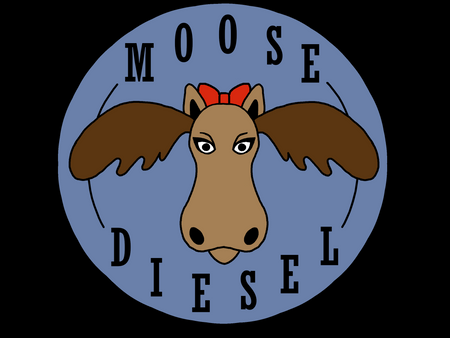
🛠 Choosing the Right Moose Pump for Your Truck or Van
Or: “How do I know which pump is best for my setup?”
Selecting the right Moose Pump depends on a combination of your vehicle’s mechanical setup and the driving conditions it regularly faces. To find the best match, start by asking yourself a few key questions based on the performance level you’re considering.
🐂 Bull Moose Pump
The Bull Moose is ideal for vehicles with higher airflow and performance monitoring capabilities. Ask yourself:
-
Do I have a turbocharger?
-
Do I have an intercooler, or am I strongly considering one?
-
Do I use a pyrometer to monitor exhaust gas temperatures (EGTs)?
-
Am I the only driver, or will others be trained to monitor the pyrometer?
-
Do I tow lightly and infrequently, or not mind exhaust smoke or its effects on my trailer when towing?
-
Am I free from emissions testing, or will I install a Hypermax Puff Limiter if needed?
-
Do I rarely drive on steep grades or at high elevation, or do I understand lower gear ratios help maintain boost and reduce EGTs?
📌 If you answered "yes" to all the above, the Bull Moose is a strong fit. If not, consider stepping down to a Moose Junior Pump.
🦌 Moose Junior Pump
The Moose Junior balances performance and practicality. It’s suitable for modest upgrades or light towing. Ask yourself:
-
Do I have—or plan to install—a turbocharger?
-
Do I monitor EGTs with a pyrometer?
-
Am I the only driver, or can I train others on monitoring EGTs?
-
Do I tow lightly and occasionally, and understand limited airflow may affect towing power without a turbo/intercooler?
-
Am I free from emissions testing, or willing to use a Hypermax Puff Limiter if required?
-
Do I avoid frequent high-elevation or steep-grade driving, or understand how gearing can help airflow and EGT control?
📌 If you answered "yes" to these, the Moose Junior is a solid match. If not, the Baby Moose may be your best bet.
🦌 Baby Moose Pump
Best for stock setups or beginner performance upgrades. Ask yourself:
-
Do I monitor EGTs using a pyrometer, with the probe placed within 3 inches of the exhaust manifold flange?
📌 If so, the Baby Moose is a safe and reliable choice. We strongly discourage running any IDI engine (even stock) without a pyrometer—keeping EGTs below 1250°F is crucial for engine longevity.
🦌 Mini Moose Pump
If you have reached this point without answering "yes" to any of the above, then a stock replacement, which is our Mini Moose pump, is the answer.
🔥 Understanding Towing and IDI Power
Whether you’re hauling a trailer or daily driving, every Moose Pump upgrade should be informed by the diesel power triangle: Fuel + Air + Timing = Power
-
❌ If you increase fuel without improving airflow, EGTs will rise.
-
❌ Reduce fuel without reducing air, and you will not have an EGT problem, but you may not have enough power.
-
✅ Turbochargers, intercoolers, and gear ratios help balance this equation by optimizing the oxygen content, not just air pressure.
🔍 A turbo at 20 PSI with hot compressed air may have less oxygen than a turbo at 10 PSI with cooler, denser air. Cold, dense air leads to better combustion and lower EGTs—essential for performance towing.
If you’re hitting full throttle under load and still lacking boost or airflow, consider upgrading your turbo or intercooler. Moose Diesel has solutions to help you safely unlock your IDI’s full potential.
☎ Need Help Deciding?
Email us! support@moosediesel.com We’re always happy to help you navigate your setup, pick the right pump, and meet your performance goals without compromising your engine.
